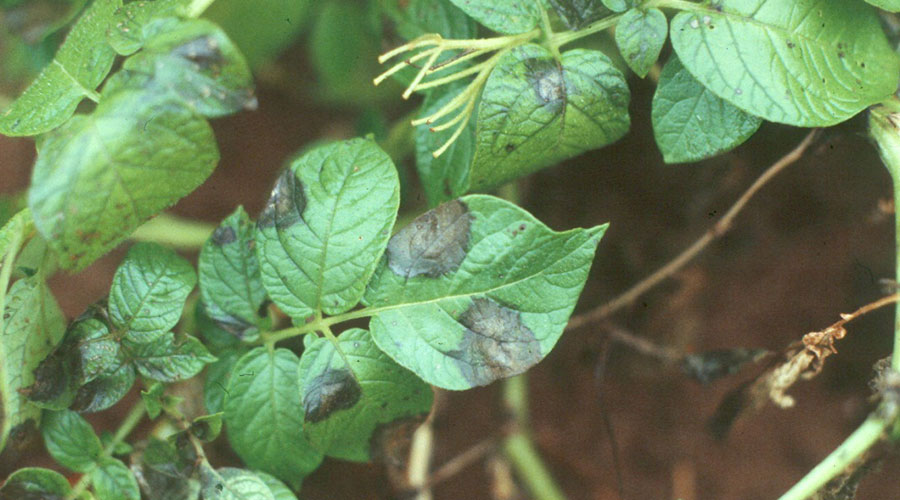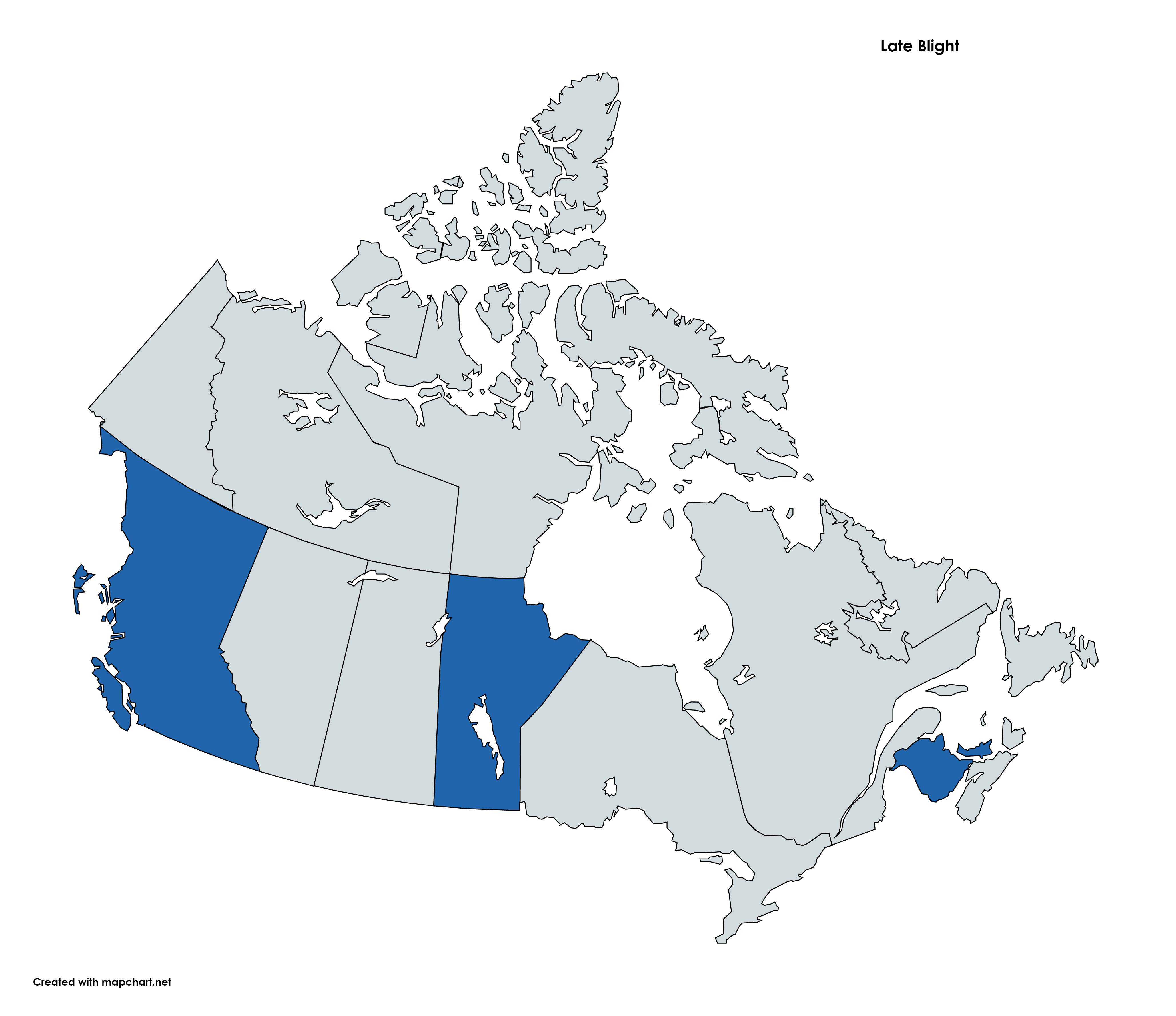
Photo credit: R. Peters
Lead Researcher
Rick Peters | Agriculture and Agri-Food Canada (AAFC), Charlottetown, PE
Objectives
- Identify strains of Phytophthora infestans causing late blight of potato in production areas across Canada.
- Assess novel late blight pathogen strains in Canada for their ability to cause disease in above and below-ground tissues of solanaceous plants, and to determine their sensitivity to registered and novel fungicides as well as the optimal environments for infection, spore production and survival.
Early Outcomes of Research
- Late blight was not prevalent in the major potato-growing acreage in 2018 or 2019, likely due to the warm, dry summers experienced in these years. During the 2018 field season, late blight was most prominent in ON and BC, and was found in both potato and tomato crops. Some spores of the pathogen were captured in spore traps in MB, ON and QC in 2019 but no disease was observed.
- In 2018, strain US-23 (an A1 mating type) caused late blight in ON. It had some sensitivity to Ridomil Gold® (metalaxyl-m) but this sensitivity appeared to decrease later in the season.
- Resistance to Ridomil Gold) was found in many isolates in the 2018 and 2019 collections from BC. In 2019, a baseline dataset on the response of various prominent pathogen genotypes (US-8, US-23, and US-24) found in Canada to oxathiopiprolin (Orondis™) was completed. So far, no resistance to this chemistry has been found.
- Preliminary data shows that US-23 can infect plants and reproduce over a wider temperature range than US-8. Studies using the temperature-gradient control apparatus are continuing to gather more detailed information on pathogen biology.
Key Messages for Growers
- Late blight pathogen strains or genotypes vary widely in their ability to cause disease on host tissues. US-23 is very aggressive on tomato foliage and fruit, but less aggressive on potato foliage. US-24 is able to infect both potato and tomato foliage similarly, while US-8 is largely adapted to potato in terms of disease expression. However, all genotypes can cause disease in potato tubers.
- Late blight pathogen dynamics continue to change in Canada, which warrants continued monitoring of pathogen populations. Tomato is now an important player in the epidemiology of late blight in Canada, and managing disease in potatoes must consider the impacts of pathogen populations infecting tomatoes.
- Having multiple strains present in a growing region will complicate disease control, and could lead to the production of over-wintering inoculum.
- Many strains are resistant to Ridomil Gold (metalaxyl-m) but fortunately, other late blight control products such as Orondis (oxathiopiprolin) remain effective and valuable tools for disease control.

